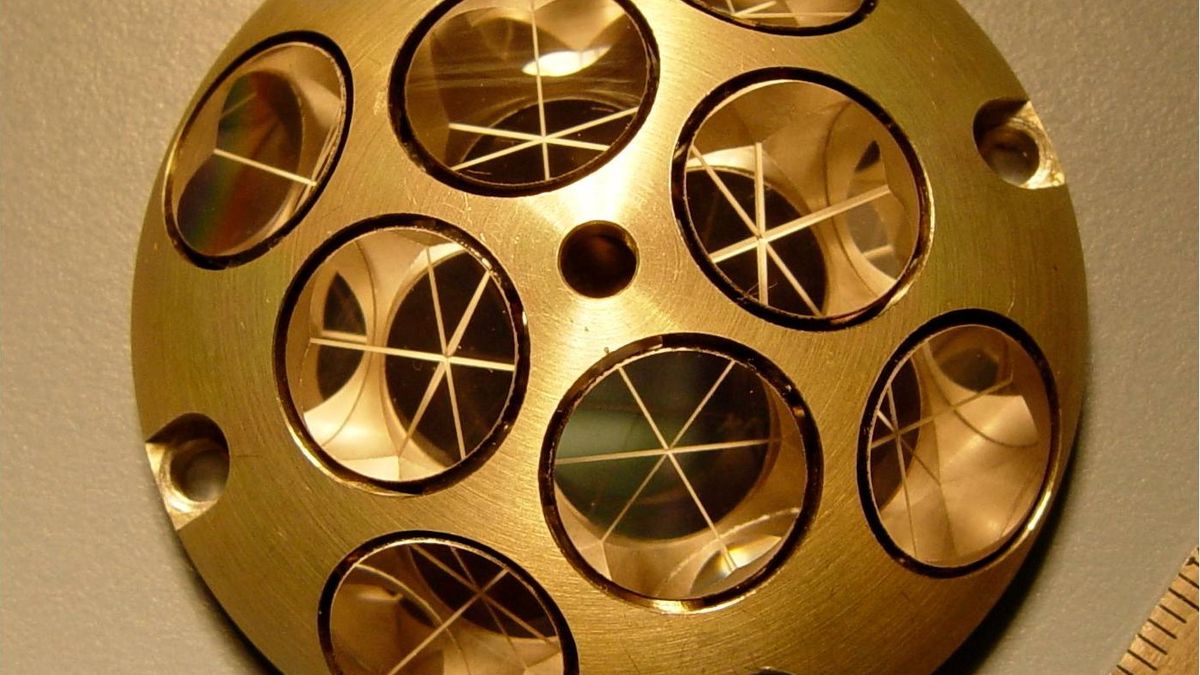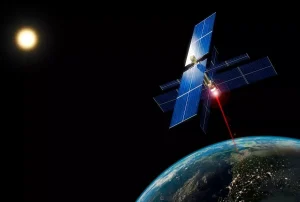Scientists Reflect Laser Beam From NASA’s LRO off Indian Moon Lander
23rd Jan 2024
In a historic moment, a laser beam was successfully sent from the NASA LRO spacecraft (Lunar Reconnaissance Orbiter) in orbit and received by a minuscule device on the Indian Space Research Organisation’s Vikram lunar lander on the Moon’s surface.
This breakthrough experiment paves the way for a new method of accurately locating objects on the lunar surface.
LRO laser bounce a first
On 12th December 2023, NASA’s Lunar Reconnaissance Orbiter (LRO) aimed its laser altimeter tool towards Vikram, which was located 62 miles away near the South Pole region of the Moon. The scientists confirmed the technique’s success after the orbiter received light from a NASA retroreflector on the Vikram lander.
To track the locations of satellites orbiting the Earth from the ground, scientists have long been using the technique of transmitting laser pulses toward an object and measuring the time it takes for the light to bounce back. However, scientists have now found a new “reverse” application of this technique, where laser pulses are instead sent from a mobile spacecraft towards a motionless one to determine its exact location.
NASA’s Laser Reflector Array is a small device that is only two inches wide but features eight quartz-corner-cube prisms positioned into a domed aluminum frame. The retroreflector is durable, requires no power or maintenance, reflects light coming in from any direction back to the source due to its configuration, and can last for a long time.
Exploring the Applications of Retroreflectors in Space Exploration
Retroreflectors have numerous applications in space exploration and science and have been utilized on the Moon since the Apollo period. By reflecting light back to the Earth’s surface, these retroreflectors have helped scientists determine that the Moon is moving away from the Earth at a rate of 1.5 inches per year.
The latest generation of smaller retroreflector models has even more diverse applications than their previous suitcase-sized predecessors. These minute retroreflectors are utilized as precision markers that aid cargo aircraft in autonomously docking at the ISS.
In the upcoming years, these markers could serve multiple purposes. For instance, they could assist Artemis astronauts in landing on the Moon’s surface in the dark or help identify the spots where other spacecraft have already landed, enabling astronauts or crewless spacecraft to land close to them.
At present, the team developing NASA’s small-scale reflectors will keep utilizing the laser altimeter of LRO to enhance the precision of object positioning on the surface of the Moon, with a particular focus on landers.

![Beauty of the Pink Moon And Lyrid Meteor Shower in This Week’s Best Astrophotos [19-26 April] Beauty of the Pink Moon And Lyrid Meteor Shower in This Week’s Best Astrophotos [19-26 April]](https://orbitaltoday.com/wp-content/uploads/2024/04/Pink-Moon-is-on-its-way-above-the-mountains-1-300x300.jpg)





Thank you for your comment! It will be visible on the site after moderation.